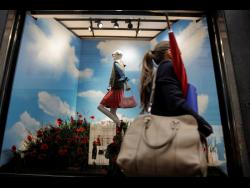The Second-hand Luxury Business market refers to a segment of the retail industry dedicated to the buying, selling, and trading of pre-owned high-end and luxury goods, including designer fashion items, accessories, watches, jewellery, and luxury handbags. This market caters to consumers who seek luxury items at a reduced cost or want to participate in sustainable fashion practices by extending the lifecycle of luxury products. Second-hand luxury businesses may operate through physical consignment stores, online marketplaces, or both, offering a wide range of authenticated, gently used, or vintage luxury items from renowned brands.
The global Second-hand Luxury Business market is expected to grow at a CAGR of 11.48% from 2023 to 2030. Second-hand luxury businesses play a significant role in the circular economy, promoting the reuse and resale of luxury goods. They often provide services such as item authentication, quality control, and professional product photography to ensure transparency and trust between buyers and sellers. These businesses may also offer expert appraisals and valuation services for vintage or rare items. Consumers are drawn to the second-hand luxury market for the opportunity to access exclusive and coveted luxury items at a fraction of their original retail prices while reducing the environmental footprint associated with fashion production.
Get Sample PDF Copy of this Report:
https://www.infinitybusinessinsights.com/request_sample.php?id=915862&Mode=AC99
Global Key Players covered in Second-hand Luxury Business Market Report are: Vestiaire, Komehyo, The RealReal, Luxury Garage Sale, Aplum, Secoo, What Goes Around Comes Around, Tradesy, Fashionphile, Poshmark
Second-hand Luxury Business Market Segments:
Second-hand Luxury Business Market Classifies into Types:
Online
Offline
Second-hand Luxury Business Market Segmented into Application:
Watches&Jewellery
Bags
Clothing
Others
Regional Analysis: The second-hand luxury business market is global, with notable markets in North America, Europe, Asia-Pacific, and other regions. North America, particularly the United States, is a significant market, driven by a thriving luxury resale industry and a growing awareness of sustainable fashion practices. Europe, with its strong fashion culture and luxury heritage, is also a prominent region, with well-established luxury consignment boutiques. Asia-Pacific, including countries like Japan and South Korea, has seen rapid growth in second-hand luxury businesses due to the popularity of luxury brands and an emerging interest in sustainable fashion. Emerging markets in Latin America and Africa are witnessing increased adoption as luxury resale gains momentum.
Click here to Buy This Report:
https://www.infinitybusinessinsights.com/checkout?id=915862&Mode=AC99
The second-hand luxury business industry is characterized by its commitment to authenticity, quality, and a curated shopping experience. Key trends include the use of advanced authentication technologies, such as AI-powered authentication and blockchain-based provenance tracking, to ensure the legitimacy of luxury items. Sustainability initiatives, including upcycling and repair services, are becoming increasingly important as consumers seek to minimize waste in the fashion industry. The industry is also influenced by fashion trends and brand collaborations that drive demand for specific luxury items in the resale market. Additionally, the rise of online luxury resale marketplaces has expanded access to second-hand luxury goods globally.
Covid Analysis: The COVID-19 pandemic had a dual impact on the second-hand luxury business market. In the early stages of the pandemic, the closure of physical stores and uncertainty around economic conditions led to a slowdown in luxury resale. However, as consumers turned to online shopping and sought ways to save money, the market rebounded. Many luxury resale businesses reported increased online sales as consumers sought high-quality, affordable luxury items. Sustainability and the desire for unique, pre-owned luxury pieces also drove interest in the second-hand luxury market. Additionally, the pandemic prompted luxury brands to explore collaborations with resale platforms, further legitimizing and accelerating the growth of the second-hand luxury business. The market is expected to continue to thrive as sustainable fashion practices and the desire for luxury bargains persist.
Some of The Key Aspects Covered in This Report:
1. What will be the market development rate, growth momentum or acceleration market carries during the forecast period?
2. Which are the important factors driving the market?
3. What was the size of the market by value in 2022?
4. What will be the size of the market in 2030?
5. Which region is expected to hold the highest market share in this market?
6. What developments, challenges and obstacles will impact the development and sizing of the global market?
7. What are sales volume, revenue and price examination of key manufacturers of the market.
8. What are the market opportunities and threats encountered by the vendors in the global market industry?
If You Have Any Query/Inquiry, Ask Our Expert:
https://www.infinitybusinessinsights.com/enquiry_before_buying.php?id=915862&Mode=AC99
Table of Contents:
1. Second-hand Luxury Business Market Overview
2. Market Competition by Manufacturers
3. Production by Region
4. Global Second-hand Luxury Business Consumption by Region
5. Segment by Type
6. Segment by Application
7. Key Companies Profiled
8. Second-hand Luxury Business Cost Analysis
9. Marketing Channel, Distributors and Customers
10. Market Dynamics
11. Production and Supply Forecast
12. Consumption and Demand Forecast
13. Forecast by Type and by Application (2023-2030)
14. Research Finding and Conclusion
15. Methodology and Data Source
Contact us :-
Amit J
Sales Co-Ordinator
International: +1 518 300 3575
Email: inquiry@infinitybusinessinsights.com
Website: https://www.infinitybusinessinsights.com
COMTEX_440043664/2657/2023-09-12T09:05:03
This post was originally published on this site be sure to check out more of their content.



